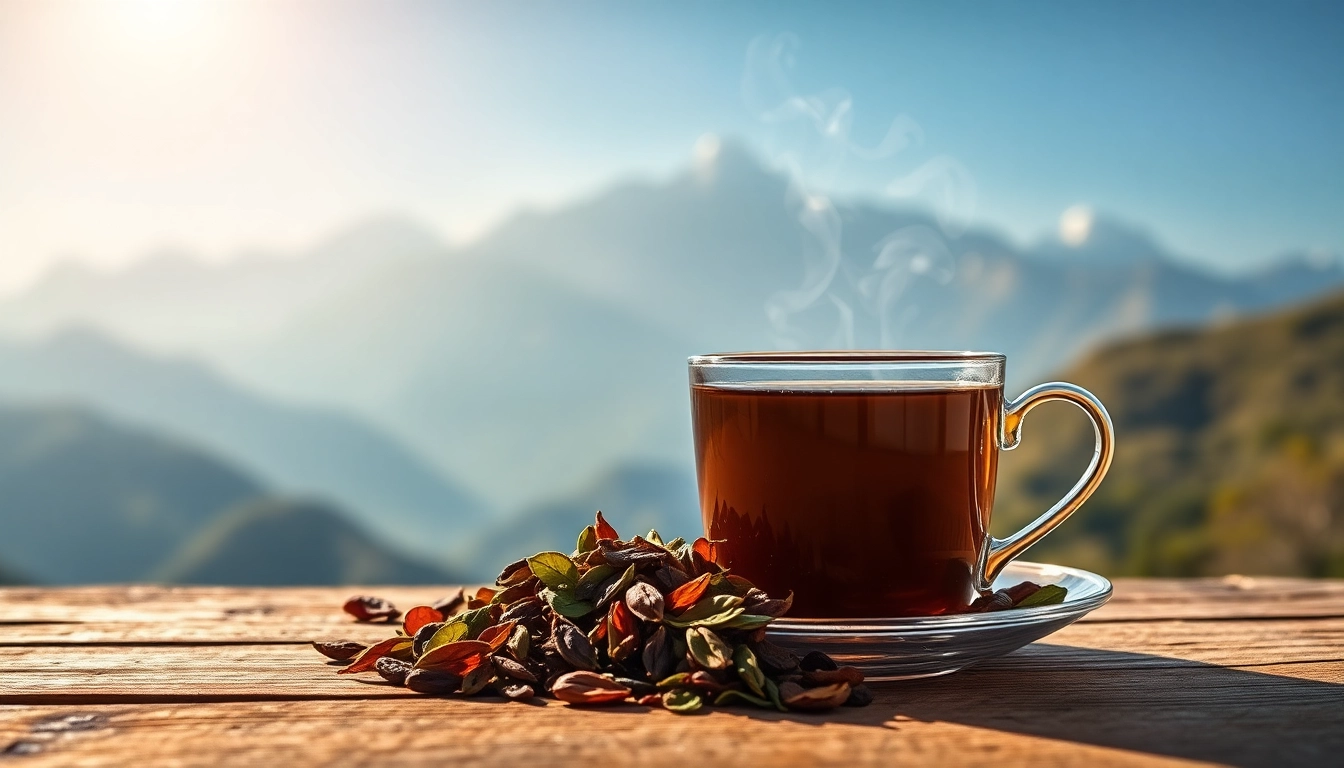Introduction to Best Teas from Nepal
Nepal, a small nation nestled between India and China, is home to some of the finest teas in the world. Known for its diverse climate and rich biodiversity, the country offers a variety of teas that are celebrated not only for their exceptional flavor but also for their remarkable health benefits. In recent years, there has been a growing appreciation globally for these unique beverages, making it an ideal time to explore and discover best teas from Nepal. This article delves into the uniqueness of Nepali teas, their popular varieties, and the cultural significance surrounding them.
What Makes Nepali Teas Unique?
The unique characteristics of Nepali teas stem from several factors: the geographical terrain, climate, and traditional methods of cultivation and processing. The high altitudes of the Himalayan region contribute to slower growth rates of tea plants, allowing the leaves to develop richer flavors and more complex aromas. Moreover, the rich soil, abundant rainfall, and the diverse microclimates across different regions in Nepal create conditions that are highly favorable for tea cultivation.
Additionally, many tea gardens in Nepal adopt organic farming practices, meaning that the teas are grown without synthetic fertilizers or pesticides. This not only enhances the flavor profile of the tea but also contributes to health benefits for those who consume it. The passion and dedication of local farmers further elevate the quality of these teas, many of which are handpicked during the best harvesting periods.
Popular Types of Nepali Teas
Nepal produces an array of tea varieties that range from classic black and green teas to exquisite white teas. Some of the most popular types include:
- Black Tea: Often regarded as the most popular choice, Nepali black tea offers a robust flavor profile, similar to that of Darjeeling tea. It is perfect for those who enjoy a strong cup in the morning.
- Green Tea: Renowned for its health benefits, Nepali green tea has a delicate flavor with vegetal notes. It is often enjoyed without milk, allowing drinkers to fully appreciate its nuances.
- White Tea: One of the more luxurious options, white tea is less processed and has a light, soothing quality. It’s often noted for its subtle, soft flavors and sweet aroma.
- Oolong Tea: This semi-oxidized tea bridges the gap between green and black teas. The rich, buttery taste and floral aroma make it a favorite among tea enthusiasts.
Health Benefits of Drinking Nepali Tea
The health benefits associated with Nepali teas are varied and significant, making them an excellent choice for those looking to enhance their overall well-being. Here are a few notable advantages:
- Rich in Antioxidants: Teas from Nepal are full of antioxidants which combat oxidative stress, thus reducing the risk of chronic diseases.
- Boosts Metabolism: Green tea, in particular, is known for enhancing metabolic rates, which can help in weight management.
- Improves Mental Alertness: The moderate amount of caffeine found in black and green teas helps improve focus and cognitive function.
- Promotes Heart Health: Regular consumption of tea has been linked to lower risks of heart disease due to its ability to improve cholesterol levels.
Top Varieties of Best Teas from Nepal
When delving into the world of Nepali teas, several varieties stand out for their exceptional quality and unique flavors. Here are some highlights:
Highlighting Himalayan Golden Black Tea
One of the crowning jewels of Nepalese tea is the Himalayan Golden Black Tea. Known for its golden-tipped leaves and rich, full-bodied flavor, this tea has garnered international recognition. The golden tips of the leaves indicate a high level of polyphenols and the presence of essential oils, contributing to its smooth and rich mouthfeel.
Harvested from high-altitude gardens, this tea showcases the exquisite craftsmanship of Nepali tea producers. Upon sipping, one can expect a harmonious balance between sweetness and a hint of briskness, making it a delightful choice for both tea aficionados and casual drinkers alike.
Exploring Nepal’s Green and White Teas
Nepal’s green teas, including the famous “Jun Chiyabari”, are prized for their fresh, grassy flavor. The tea leaves are lightly processed, preserving their health benefits while maintaining a light, crisp taste that’s incredibly refreshing. These teas are particularly loved by those seeking to enjoy a drink that aids in digestion and promotes overall health.
White teas, although less common, are another treasure of Nepal. “Silver Needle” and “White Prakash” are two illustrious examples. These teas are harvested only during specific times and involve minimal processing, showcasing the natural characteristics of the tea leaves. When brewed, they yield a delicate beverage that often has a subtle sweetness and light floral notes.
Understanding Flavor Profiles
The flavor profiles of Nepali teas vary immensely, influenced by factors like cultivar, altitude, and processing methods. Black teas often exhibit deep, rich flavors with hints of chocolate or stone fruits, while green teas tend to highlight vegetal, fresh acts often met with sweetness. It’s essential for tea drinkers to explore a variety of tastes to find their preference.
One of the defining features of Nepali teas is their unique muscatel flavor, often compared to that found in Darjeeling tea. This distinctiveness arises from the high-altitude geography and specific climatic conditions of the region where they are grown, making them stand out in a crowded tea market.
How to Brew the Perfect Cup of Nepali Tea
Brewing Nepali tea to perfection requires attention to detail, including temperature, steeping time, and the tea-to-water ratio. Here’s how you can achieve the ideal cup:
Essential Brewing Equipment
To begin, having the right tools is crucial. Basic equipment includes:
- Teapot or Teacup: A teapot allows for multiple servings, while a teacup can suffice for personal use.
- Temperature-Controlled Kettle: Ensuring water is at the right temperature for your specific tea type is critical.
- Measuring Spoon or Scale: Precise measurements of tea leaves can significantly affect flavor concentration.
Step-by-Step Brewing Guide
Here’s a straightforward guide to brewing different types of Nepali tea:
- Black Tea: Heat water to 90-95°C (195-203°F). Use approximately 1 teaspoon of tea leaves per cup. Steep for 3-5 minutes.
- Green Tea: Water should be cooled to 70-80°C (158-176°F). Add 1 teaspoon of tea leaves per cup and steep for 2-3 minutes.
- White Tea: Use water at about 80-85°C (176-185°F) and steep the leaves for about 4-5 minutes for optimal flavor.
Enhancing Tea Flavor with Additives
While many purists enjoy their tea plain, adding elements like honey, lemon, or spices can enhance the overall experience. Here are a few tips:
- Honey: Adds a natural sweetness that complements the earthy tones of black tea.
- Lemon: A few drops can brighten the flavor, especially in green teas.
- Spices: For a masala chai, consider adding cardamom, ginger, or cinnamon to black tea for added warmth and complexity.
The Cultural Significance of Tea in Nepal
Tea in Nepal is much more than a beverage; it holds a significant place within the culture and community, deeply intertwined with daily practices and traditional rituals.
Traditional Practices and Ceremonies
Traditional Nepali tea ceremonies often involve special preparations, particularly during celebrations and gatherings. Serving tea to guests is a common gesture of hospitality, showcasing the warmth and generosity of the host. In many rural communities, the preparation of tea can serve as a communal event, highlighting collaboration and sharing among family and friends.
Tea’s Role in Nepali Hospitality
Notably, hospitality in Nepal is a critical cultural element. Guests are often welcomed with a cup of tea as a sign of respect. The pouring of tea is considered an art, symbolizing the host’s goodwill and affection. Whether in a family home or a local tea house, sharing a cup of tea fosters connections, conversations, and a sense of belonging.
Regional Tea Farming Communities
Nepal’s diverse geographic regions play a vital role in shaping its tea industry. The tea-producing regions, particularly Ilam and Kanchanjangha, are known for their fertile lands and favorable climates. The tea farmers in these areas uphold traditional farming techniques while also embracing sustainable practices, contributing to their economy and promoting community livelihoods.
Where to Buy the Best Teas from Nepal
For those wishing to experience the rich flavors of Nepali tea, knowing where to purchase them is essential. Whether you’re looking to buy online or in person, there are numerous options available.
Online Retailers and Local Stores
Many online retailers specialize in selling organic and high-quality Nepali teas. Websites dedicated to tea enthusiasts often provide detailed descriptions of the varieties available. Additionally, local health food stores may carry selected brands, providing opportunities to explore different flavors without purchasing large quantities.
Importing Tips for International Buyers
For international buyers, importing Nepali teas can be a smooth experience if approached correctly. Ensure that you check import regulations in your country regarding food items and consider ordering during off-peak seasons to avoid shipping delays. It is also worthwhile to compare prices and quality through various suppliers to find the best deals.
Supporting Fair Trade Practices
As an ethical consumer, supporting fair trade practices is crucial. Many Nepali tea farms adhere to fair trade guidelines, meaning that farmers receive fair wages and work under equitable conditions. Purchasing fair trade-certified teas not only guarantees quality but also bolsters the livelihoods of local farmers while sustaining their communities.



